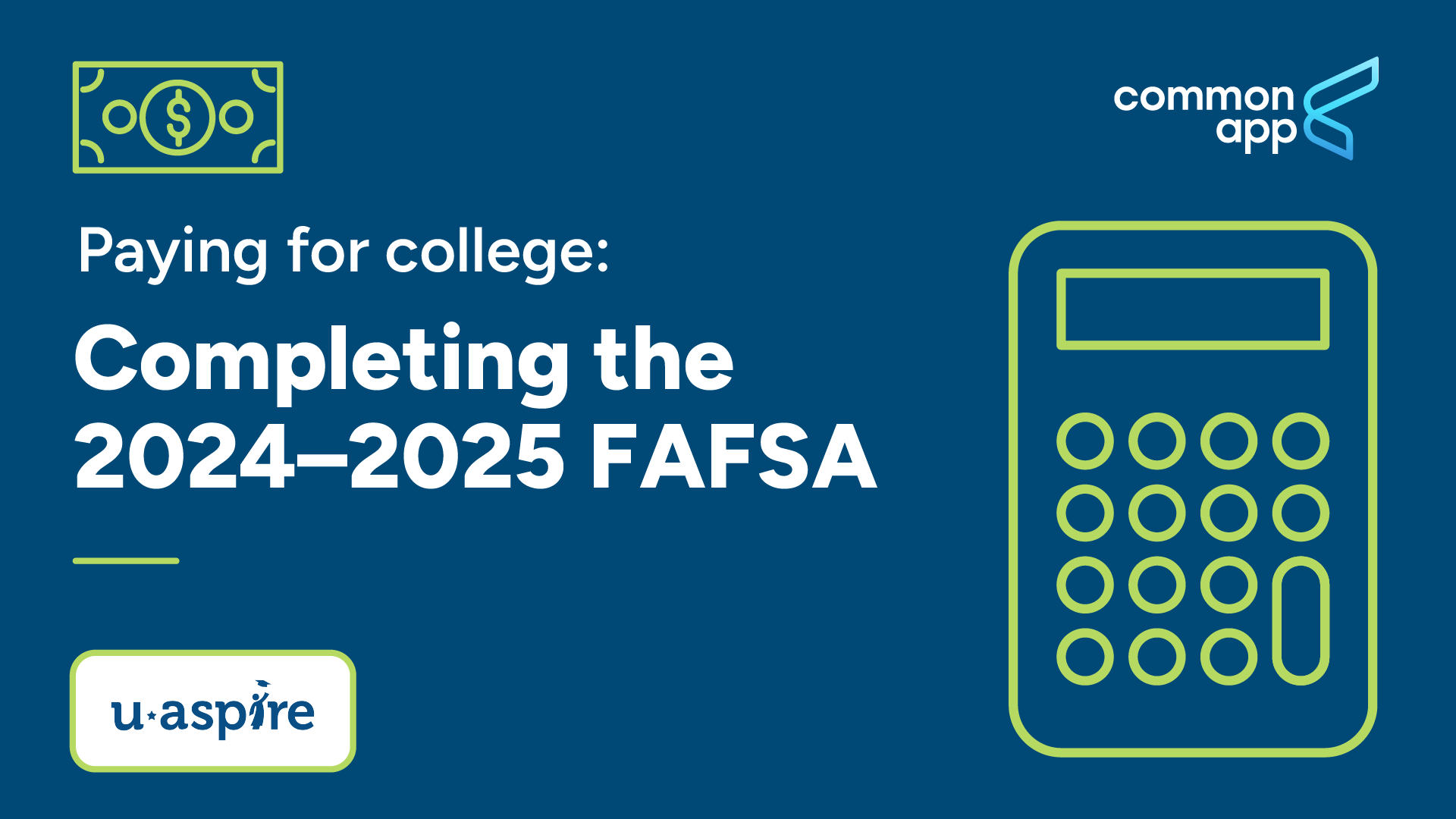

If you're a U.S. citizen or an eligible non-U.S. citizen, completing the FAFSA (Free Application for Federal Student Aid) can help you pay for college. This free application allows you to apply for grants, loans, and work-study funds from the U.S. government. States and colleges also use information from your FAFSA to determine additional aid you may be eligible to receive.
Filing the FAFSA is an annual process. If you are applying for financial aid in the 2024–25 school year, you should complete the 2024–25 FAFSA. Due to significant changes and improvements, this form opened in December 2023, later than usual. To complete the FAFSA, you must create an account called a Federal Student Aid ID (FSA ID).


This livestream recording walks students and families through the entire FAFSA by section, outlining necessary information, detailing common pain points, and discussing how to answer questions.
This presentation also gives a bit of insight into what comes after the FAFSA by discussing the financial aid timeline, plus a brief introduction to the FAFSA Submission Summary (formerly called SAR) and verification. Following the presentation, a Q&A session was held, along with details on how to reach out to uAspire if you have additional questions.

The Federal Student Aid (FSA) YouTube channel shares step-by-step videos of information and resources related to the financial aid process. All information comes directly from the U.S. Department of Education. Their resources help make college education possible for everyone.
From federal grants and student loans to employment through the federal work-study program, the U.S. Department of Education awards about $150 billion a year to more than 15 million students. Visit the Office of Federal Student Aid to learn more.
Your state governmentSimilar to the federal government, your home state offers various types of financial aid. You might be eligible even if you’re not eligible for federal aid. To find out, contact your state grant agency.
Colleges and universitiesMany colleges and universities provide financial aid and scholarships from their own funds, sometimes for a particular field of study. To learn if a school offers this type of financial support, visit the financial aid section of their website or contact their financial aid office directly.
PRO TIP: College financial aid officers are more than willing to help you and your family understand the financial aid process, even before you’ve applied. Don’t hesitate to reach out to them. That's what they're there for.
Now that you know who is available to help you pay for college, it’s important to understand what you can do to make college more affordable.
Start savingIt's never too early to set aside funds to pay for college. There are even specific government-sponsored savings plans to help you do just that. To learn about savings opportunities and strategies, visit the Office of Federal Student Aid and check out their guide to saving early.
PRO TIP: Wondering what a particular college might cost? Get an estimate using the U.S. Department of Education’s net price calculator.
Apply for financial aidFinancial aid comes in many forms from many sources. Start by visiting the Office of Federal Student Aid to learn about the different types of financial aid available (like grants, loans, and work-study). Then, when you're ready to apply, you'll need to complete the FAFSA (Free Application for Federal Student Aid).
PRO TIP: Get a head start on the process by using the Federal Student Aid Estimator. This tool provides an estimate of your eligibility for federal student aid.
Explore scholarship opportunitiesMost scholarships are awarded by individual colleges in recognition of academic performance, athletic excellence, a commitment to community service, or other unique talents. You can learn about these opportunities by visiting individual colleges’ admission and financial aid offices (or websites). You can also find scholarship opportunities through local, regional, and national non-profit organizations.
PRO TIP: There are a lot of scams out there. The Office of Federal Student Aid can help you avoid scams, prevent identity theft, and find true scholarships.
PRO TIP: Do your research on scholarships! Make sure you talk with the college or university in which you may enroll to understand how their financial aid packages are put together.